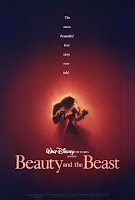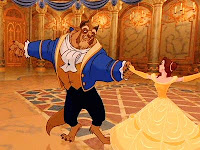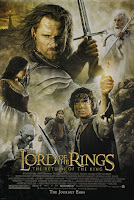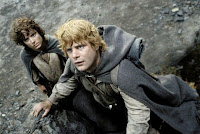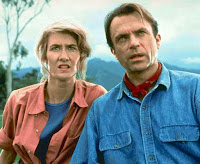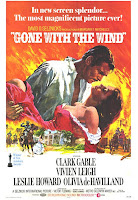top 100 revisited, #90-86
top 100 revisited, #95-91
top 100 revisited, #100-96
First thing’s first: Hi, I’m Luke. You may remember me from a long-ago world called Journalistic Skepticism that has since gone completely to seed and has been neglected far too much in the past six months or so. So here’s yet another feeble attempt at caring for it properly. I’ve been talking for months now about revisiting my top 100. The one I previously presented in countdown fashion is at least three years outdated, so I figured it was time for an update. So we’ll go in fives! Check out the links for more info, with brand new posts on the new films being welcomed into the Top 100 fold. And keep your eye on the left column as the movies start piling in again.
best films: #1: BRINGING UP BABY (1938)
What better way to return to the blogging world than by officially wrapping up the very first series I ever featured on Journalistic Skepticism, my 100 movies countdown. (FYI: This list is circa 2009, so it’s about time for an update, seeing as though I’ve viewed quite a few movies since then… a FYC for a revised Top 100 will be coming your way in the coming months!) After all the sweeping epics and goofy comedies and sentimental kids flicks and harrowing thrillers, my #1 movie of all time all comes down to Baby. The tamed, house-trained leopard that is. One of the reasons I fell in love with movies, to be honest, it’s an enduring classics that I could never see too many times and that elicits laughter unlike most anything that’s come after it. Bringing Up Baby is my all-time favorite. You can’t get a much better pair of actors than Katharine Hepburn and Cary Grant. They’re both legendary talents who are best known, perhaps, for their more serious roles but truly shine in comedy. Particularly this screwball affair in which an eccentric heiress, a bumbling paleontologist, and a runaway pet leopard chase each other around the countryside.
It sounds like the plot of some terrible CGI-ed Adam Sandler vehicle now, but the movie is sheer brilliance. Hepburn plays high society type Susan Vance to outstanding effect. Her natural lilt works great in this setting, and her timing is beyond. Grant is her overly able straight man who gets worn down by Susan’s endless charms. It’s goofy, to be sure, but it purely defines what I find most wonderful about the cinema. It tells a seemingly simple story in such a way that anyone who watches it leaves with pure joy. Howard Hawks’ now-classic is all the more incredible considering it was a catastrophic flop when it was released. Thank goodness it wasn’t lost into obscurity due to its ill will. It’s an astounding piece of comedy gold, and I am hard-pressed to find anyone who’s watched it that doesn’t agree with that.
best films: #2: THE GODFATHER (1972)
Naysayers be damned, you can’t get much more of a perfect film than The Godfather. Packed with brilliant performances, writing, scoring, cinematography (feel free to stop me at any point), costuming… basically the movie has it all. And though some would argue the very stellar Part II outdoes this 1972 original, I have to stick my guns (I’m sorry for that) and stay loyal to the Marlon Brando starrer. Here we see a family in transition – the aging Don Vito Corleon (Brando) is dealing with the changing landscape of the modern mafia. His eldest, hothead Santino “Sonny” (played with short-tempered gusto by James Caan) is itching to take over, while sniveling Fredo (the ideally cast John Cazale) can’t muster up the courage. And war hero Michael (brilliant newbie turned screen legend in his first major role, Al Pacino) can’t seem to keep out of the family business, despite the urging of his schoolteacher girlfriend, Kay (a young and pre-Annie Hall Diane Keaton). The story that Mario Puzo and Francis Ford Coppola have set up is an age-old one: which son will take over the family business? Lord knows Connie (played by Coppola’s sister Talia Shire), with her abusive marriage and dastardly husband isn’t going anywhere near that top dog spot.
But enough of setting up plot, which I’m sure most people with a pulse are familiar with already. On to the reasons why this movie ranks as my No. 2 favorite of all time. As always, let’s start with the performances. Oscar switcheroo aside, Brando is at the top of his game in one of his last great performances as the don. His signature voice and bottom lip have been ridiculed in movies and TV incessantly ever since, so it’s easy to pass off his role as comical. But don’t disregard its original effect – Vito has been at this a long time, so don’t let his seemingly soft demeanor fool you. Caan is a young fireball in the Sonny role – I guess he really couldn’t shake that sort of part since, but at least he perfected it off the bat. Robert Duvall is quiet excellence as Tom Hagen, lawyer and family friend. You can see the desire in his eyes to play a bigger role in the Corleone business, but he keeps it in check for the duration. And Pacino, frankly, has never been better. He may’ve since become the poster child for hamminess in his more recent years, but Michael is so multi-dimensional. Small stature and a delicate speaking voice should not undermine the fact that a future cold-blooded killer is lying in his soul.
And as for the ladies, though Shire was obviously shown a wee bit of nepotism, her domestic scenes are weepy work that the actress does well with. The stand-out of the female set, though, is Keaton, whose quirky tendencies have become her wheelhouse, even though this auspicious beginning (this was her first major film role) called for much more stoic character work. But all of these cast members that have since become major players in the movie business would be nowhere without Puzo’s original source material. Thanks to his work with director and co-screenwriter Coppola, the iconic words and oft-repeated lines are each gems. When watching The Godfather it’s hard not to appreciate every bit of dialogue as a treat. And with Nino Rota’s signature trumpet-driven score behind it, the words fly off the page with such eerie tension.
best films: #3: BEAUTY AND THE BEAST (1991)
When asked what the greatest love story, musical, or animated film of all time is, the answer has always been very easy – Beauty and the Beast is the undisputed champion of all three genres, in my book. (And it’s achievements are all the more impressive after seeing the 2010 doc Waking Sleeping Beauty – it’s a good watch… rent it!) At the heart of the film is the impeccable scoring and lyrics from Alan Menken and Howard Ashman, undoubtedly one of the all-time great duos in song-writing. The entire soundtrack is sheer perfection. From the jaunty, upbeat “Be Our Guest” to the thrilling and très français opening number “Belle” to the incredibly romantic and timeless title song, it has to rank among the best played movie musicals of all time, without even dividing the live action and animated ones. And thankfully, this outing is much more than just the insanely addictive soundtrack. The animation is beautiful and a great testament to the merits of hand-drawn animation. CGI has churned out some impressive and wonderful films in the past decade-and-a-half, but 2D animation hasn’t gotten its fair shake in that time. The simple fact is, children today can still watch Beauty and the Beast, The Little Mermaid, and Aladdin and be completely amazed at the color and style that comes with hand-drawn work.
And as far as the voice acting goes, I’ve said it before, and I’ll say it again – stunt celebrity casting does not a great animated movie make. Studios in this past decade have relied so heavily on casting famous tabloid fodder for their voice cast, neglecting the wealth of little-known talents (namely people like Pat Carroll who played Ursula in Mermaid or Jonathan Freeman who played Jafar in Aladdin). In Beauty and the Beast, the stars are little-known Broadway actress Paige O’Hara and sideline player in a handful of movies Robby Benson. Sure, they picked up the luminous Angela Lansbury, David Ogden Stiers, and Jerry Orbach for the trio of household objects who steal the show, but the pedigree is far surpassing anything you’ll likely see in anything DreamWorks Animation puts out. Speaking of, Lansbury is giving arguably one of the best animated voice acting performances ever – it’s unfortunate that the Oscars completely poo-poo this sort of things as “true acting.” But all things considered, the true star and biggest success of this movie is the storytelling – adapted from the French fairy tale, it’s the prime example of a film that works for all ages and generations. It’s beauty transcends preconceived notions, cynicism, and ill will.
best films: #4: THE LORD OF THE RINGS: THE RETURN OF THE KING (2003)
All right, you knew it was a long time coming – since Fellowship and Two Towers have already had their own days in the sun on this here list, it’s only fitting that the closing of the trilogy (and eventual Oscar phenomenon) would crack the Top 100. This is a tough battle to argue – there are people from all three camps when deciding which LOTR is the superior one. I’m a sucker for the grandeur and relentless endings of Return of the King. Where Fellowship had the incredible story set-up and character development, and Two Towers had the beautiful backdrops and epically designed battle sequences, ROTK combines both seamlessly into one gorgeous conclusion. Call the Best Picture Oscar a make-up award for the two prior snubbed tries, but I truly believe it won of its own accord. Return of the King is everything a trip to the movies should be wrapped up in a beautifully filmed, expertly edited bow. Now aside from the obvious satisfaction (though I questioned the place in which they cut off #2 as opposed to Tolkien’s place) of resuming the story after another year’s wait, we’re met with finality for the bulk of our characters. Will Frodo reach the summit of Mt. Doom? More importantly, will he be released from the grasp of that giant spider Shelob? Even though I’d read the novels, I was gripped by the continuance of the journey to the six or seven end scenes.
If we’re talking about the performances (which went shamefully unnoticed by many awards bodies from 2001-03), Andy Serkis is typically brilliant as the conniving Gollum. I sincerely believe that in future years, Oscar voters will live to regret not recognizing one of the best physical and vocal performances of the aughts just because of his animated nature. Billy Boyd’s sweet-voiced solo during one particularly fierce and bloody battle should’ve been enough to get him some notice – it was easily one of Pippin’s best scenes, and one of the best portions of this third flick. But if I have to choose, the stand-out was Sean Astin, whose noble and doting Samwise grew from a one-dimensional bumpkin into a full-on bastion of heroism. Astin was my choice for the Best Supporting Actor in 2003, and it still boggles my mind that he wasn’t even in the conversation come awards season. And as far as the visual extravaganza that’s going on for the duration, I could go on and on listing the greatness of Peter Jackson and his band of costumers, art directors, and cinematographers – and particularly Howard Shore’s work at making just enough original material in this outing to merit that Oscar – but I’ll let the work speak for itself. A success of literally epic proportions.
best films: #5: JURASSIC PARK (1993)
It should come as no shock to anyone who knows me personally, that part of the reason I love all things cinematic has a lot to do with the spectacle and overarching emotional response a film elicits from me. So sits Jurassic Park, a blockbuster film that rarely sees a spot on a “best of” list, yet will always hold a hallowed position in my heart and mind as a wonderful example of the experience of moviegoing. Yes, I’ve read Michael Crichton’s original novel, and yes, I would probably agree that it has its superior elements to the film that went on to become one of the highest grossers in history. But what JP lacks in realistic plot-points and superb acting (give the kids a break, okay?) it certainly makes up in edge-of-your-seat thrills and adventure, state-of-the-art effects (I’m still impressed almost 20 years later), a ridiculously intriguing and compelling story, and the childlike wonder that the concept of dinosaurs walking among us has to instill in most everyone who watches it. It is admittedly perhaps a guilty pleasure entry on this list, but I’ll never truly understand why. I believe that Sam Neill, Laura Dern, and Richard Attenborough, for example, are giving stellar performances as actors in a film in which they really could have gotten away with phoning it in. And aside from Peter Jackson’s epic Lord of the Rings, I can’t think of a better adventure story than this ragtag bunch of nay-sayers and gawkers fighting for survival on an island that’s gone primal.
And oh, the music. For me, there never has been and never will be anything as sublimely perfect as John Williams’ masterpiece of a score. Every theme is so regal and glorious, it’s hard to tell from listening to the soundtrack alone that you’re getting a movie that’s intended for popcorn audiences. Or maybe I’m just partial to that insane trumpet line (I’ve always wanted to play this one). And the accolades just continue – beyond the great lead performances, the awesome visual effects, and the incredible score, the setting is out of control. The backdrop of this thrilling story is the lush tropical island of any art director’s dreams. It’s easy to throw hate at the big movie cash cows – it’s no change in attitude to see folks diss your Star Warses and Titanics. But before you cast the first stone at Jurassic Park, try watching it without having a great time and loving the experience. There’s something to be said for storytelling, and Spielberg is obviously a master.
best films: #6: LIFE IS BEAUTIFUL (1998)
Call it overly sentimental or maybe even to lighthearted for a movie in the WWII-movie sub-genre, but what I see every time I watch Life is Beautiful is an entirely genuine – and one of the most heartfelt films of recent memory – piece of cinema, uniquely portrayed through the eyes of an innocent youngster. Sure, Robert Benigni’s Oscar(s) may seem like a waste in hindsight (his follow-up, a bizarre adaptation of Pinocchio, is widely considered one of the worst films in history), but I like to think of 1998 as the beginning and end of his then-illustrious career. He’s so gawkishly delightful as Guido, the goofy Jewish Italian waiter turned doting father, who manages to keep his family’s spirits up through one of Europe’s most trying times. I know conventional wisdom in the blogging world is that 1998’s Best Picture race left everyone in one of two camps – the artsy and passionate fans of Shakespeare in Love versus the Spielbergian historical drama devotees of Saving Private Ryan (and then there were the scattered Blanchett-lovers in favor of Elizabeth and the Malick nuts who went gaga for The Thin Red Line), but I’ve always found myself rooting for the little Italian movie that could.
As far as the most successful elements of the film, I’ll go on record that, though he hasn’t truly proven himself since, Benigni is well-served here as both a performer and a director. The film moves at such a unique and delicate pace, and Guido is such a lovable character, despite his inability to take anything seriously. And real-life wife Nicoletta Braschi is a perfect match for the goofball, an even-tempered voice of reason who provides the most poignant moment in the film (all I need to say is “Barcarolle,” right?). And I’ll be the first one to say that youngster Giorgio Cantarini, playing the hopeful and sunny Giosue, was severely overlooked come 1998’s award season – he played like a seasoned professional amongst the grown-ups in the dire setting of the story. And it wouldn’t be a true Journalistic Skepticism entry without noting the score work by Nicola Piovani. It blended the perfect combination of Italian cinema stylings with the darker tones needed to express the feelings of 1940s Italy.
best films: #7: GONE WITH THE WIND (1939)
It’s not exactly an inspired choice on my part, but it’s hard to deny the prowess that the 1939 classic Gone with the Wind tows along with it. Aside from the instant connotations of “classic” that come with simply uttering the title, there are a smattering of stellar performances, an at-the-time state-of-the-art production design, an iconic score, and a legendary (if poorly aging) story at play. To start, can you think of a more thought-of romantic pairing than Scarlett O’Hara and Rhett Butler (aside from perhaps Rick and Ilsa)? The two of them were such an explosive pairing, the love story is less about their confounding affair and more about the sparks that fly whenever they spar. Clark Gable is all machismo as the unshakeable Rhett, and he’s an excellent yin to Scarlett’s yang. But Vivien Leigh is the true star here – she makes the whiny and flaky Scarlett into such a fully realized woman by film’s end that this viewer is almost inclined to feel bad for this spoiled brat of a young lady. Leigh is simply an incomparable performer, and this is a role of a lifetime. As far as the additional cast members, Olivia de Havilland is all matronly goodness as the angelic Melanie, and she’s impossible not to root for in lieu of any decent person around her. And Oscar winner Hattie McDaniel breathes such life into what would since become a deeply troubling characterization, the role of Mammie isn’t just a racist caricature thanks to her nuance.
It is intriguing to consider how this book would be adapted for modern audiences. The characterizations are certainly one of the touchiest hallmarks of Gone with the Wind. But the dialogue and players don’t keep the production value from standing the test of time. Max Steiner’s sweeping score is the basis for which so many future epics’ soundtracks are written. The main theme will forever coincide with all things cinematic and grand. And the art direction, from the vast plantation setting to the burning of Atlanta, still packs a considerable punch in an age of CGI. And perhaps what proves most memorable of the visual aspects of the film is the costuming. Walter Plunkett’s over-the-top southern belle garb worn by Scarlett and her cohorts has to be cinema’s standard for period costuming. All in all, Gone with the Wind is an experience through and through.























